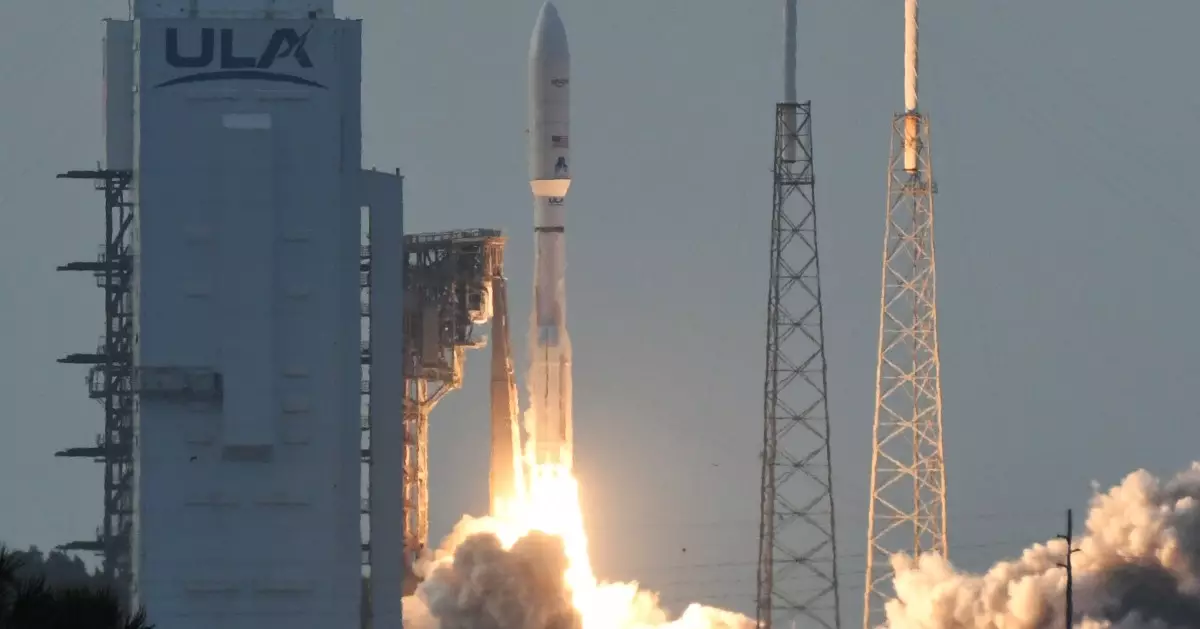In a thrilling development for the satellite internet landscape, Amazon has successfully launched its first batch of Project Kuiper satellites, marking a significant milestone in its ambitious plan to build a broadband internet constellation. The deployment of these 27 satellites into low-Earth orbit isn’t just a technical achievement; it’s a strategic maneuver by Amazon aimed at reshaping the competitive dynamics of satellite internet provision. By orchestrating this launch, Amazon places itself on the cusp of a new frontier, challenging established players like SpaceX’s Starlink.
Project Kuiper, which was unveiled in 2019, is not merely about sending satellites into space; it’s about creating a comprehensive framework for global internet access, particularly in underserved regions. With the initial launch from Cape Canaveral occurring after a brief delay, Amazon’s dedication to innovate within the sector has become apparent. As the world becomes increasingly interconnected, the pressure is mounting on tech giants to deliver reliable, high-speed internet that transcends geographical barriers.
Competition in the Cosmos
Amazon’s entry into the satellite internet business comes at a pivotal time when SpaceX’s Starlink has amassed a formidable presence in low-Earth orbit. With over 7,200 operational satellites, SpaceX’s model is established and expanding. In stark contrast, Project Kuiper is initially set to deploy just over 3,200 satellites, tailoring its ambitions under the regulatory watchful eye of the US Federal Communications Commission (FCC). The urgency of this challenge is palpable, especially given the FCC’s expectation that Amazon will launch at least 1,618 satellites by mid-2026.
While competition breeds innovation, it also raises concerns about space congestion. Earth’s orbit is rapidly becoming crowded, and the sustainability of this race to dominate satellite broadband is increasingly questioned. It remains to be seen how Amazon will navigate these challenges as they attempt to level the playing field against the established frontrunners.
Strategic Partnerships and Technological Innovation
To bolster its satellite ambitions, Amazon has enlisted United Launch Alliance (ULA) to aid in its deployment efforts. By deepening these partnerships, Amazon signals a commitment to cultivating technological excellence and operational efficiency. ULA’s CEO, Tory Bruno, highlighted the modifications made to launch facilities, hinting at a future where rapid deployment of satellites becomes the norm rather than the exception.
This collaboration is not merely logistical; it represents a blend of innovation and strategic foresight. The space sector is fraught with challenges ranging from regulatory compliance to technological development, and that’s where strategic alliances become indispensable. The emphasis on saving lives, exploring the universe, and connecting people reflects a broader vision that transcends commercial interests, hinting at a societal obligation to ensure digital equity.
The Path Ahead: Vision versus Reality
Despite Amazon’s visionary plans and soaring ambitions, the path ahead is laden with complexities. Launching the initial satellites is just the first of many hurdles. Successful integration, consistent communication, and maintaining operational efficacy will be critical for Project Kuiper’s long-term viability. Amazon promises “high-speed, low-latency” internet services later this year, but optimistic projections must be tempered by the realities of technological deployment.
Moreover, as Project Kuiper unfolds, some questions linger about the actual utility it will provide in real-world scenarios. While Amazon should be commended for striving to offer alternatives to existing services, it is imperative for them to establish robust ground infrastructure to complement their satellite capabilities. The development of this infrastructure will be vital in ensuring that the service lives up to its promises of speed and reliability in diverse terrains.
An Expanding Universe of Possibilities
As the competition for satellite internet access heats up, it heralds a new era of possibilities for consumers globally. The challenge for Amazon will be to avoid the pitfalls of overextension that echo the early struggles of other tech giants. The intricacies involved in achieving a sustainable and far-reaching network are substantial, yet the potential benefits justify the risks.
As we embark on this exciting new chapter defined by technological advancement and ambition, one can’t help but reflect on our increasing reliance on connectivity. Project Kuiper and its competitors carry the potential not only to revolutionize internet access but also to redefine how we communicate and share information on a global scale. The race is on, and with it, a world brimming with countless opportunities awaits.


Leave a Reply